Dunhuang: a city on the old Silk Road - in pictures
- Published
Dunhuang, on the old Silk Road, was one of the ancient world's most important intersections between East and West.
The Silk Road was used by merchants and traders to take goods across the Asian continent. Now China is investing billions into revitalising this route for trade. Here are some images by photographer by Li Zhengde in Gansu province, China.

Moon Crescent Spring is estimated to be 2,000 years old but because of its location in a depression, prevailing winds carry sand away from it - largely sparing it the ravages of desertification. Though many over the centuries have likened the lake to the eye or mouth of a beautiful woman, the most enduring myth is that the oasis is a perfect half-moon that has fallen from heaven to Earth.

Beside the oasis is the giant dune called Mingsha, which means literally “Chiming Sands”. The singing sands of the Gobi Desert were said to haunt Silk Road traders, conjuring ghoulish myths of a tormented desert. What they were actually hearing was the wind whipping the sand from the dunes, which creates a soft, distant hum.

The Gobi Desert, Asia’s largest, is so big the Chinese often simply refer to it as the Endless Sea. As an oasis town, Dunhuang appears like a lonesome green island amidst this arid expanse. But the desert is anything but dull. In fact, the Gobi Desert is so diverse, it is broken up into different areas depending on regional climate variation and topology.

Legend tells of an itinerant Buddhist monk Le Zun, who one night in AD366 had a vision of thousands of Buddhas shining in the sky above Mingsha Hill. Taking this as divine inspiration, he cut a temple with a golden statue of the Buddha into the river cliff. Later another Buddhist Monk, Fa Liang, visiting Dunhuang, built a second cave and within a few decades about 70 grottos had been carved at Mogao.
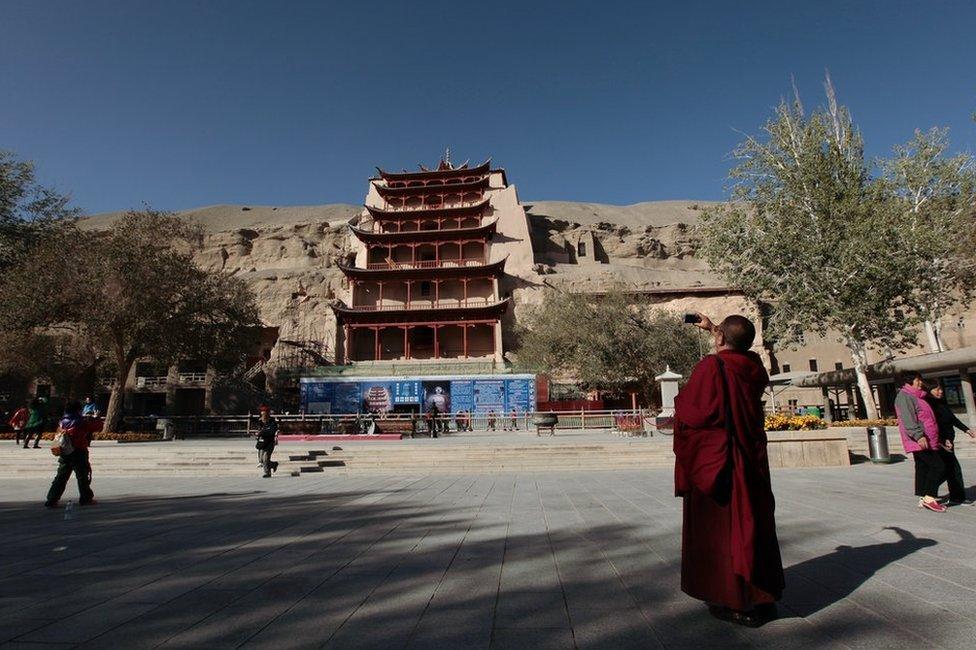
Over a period of 1,000 years, devout artists would create more than 700 cave temples with about 45,000 square metres of murals. Originally intended as prayer cells, the Mogao grottos would come to accommodate the artistic efforts of 1,000 nameless artists. It is this UNESCO-protected heritage site that underpinned Dunhuang’s emergence as a world-class tourist destination.
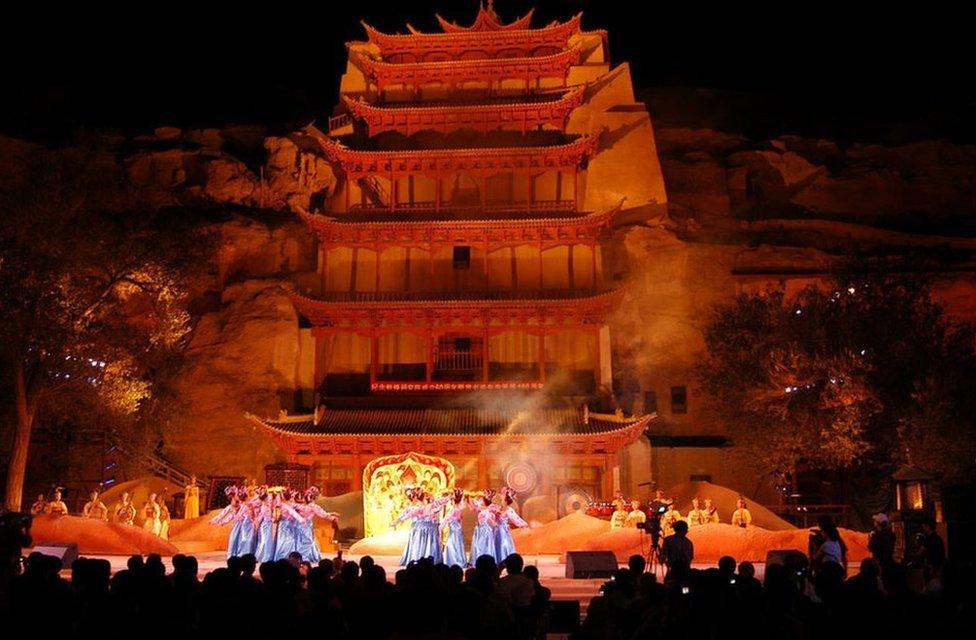
The evolution of the Mogao caves reflect influences from both the Chinese central plains and the Western Regions with many earlier caves renovated during later dynasties.
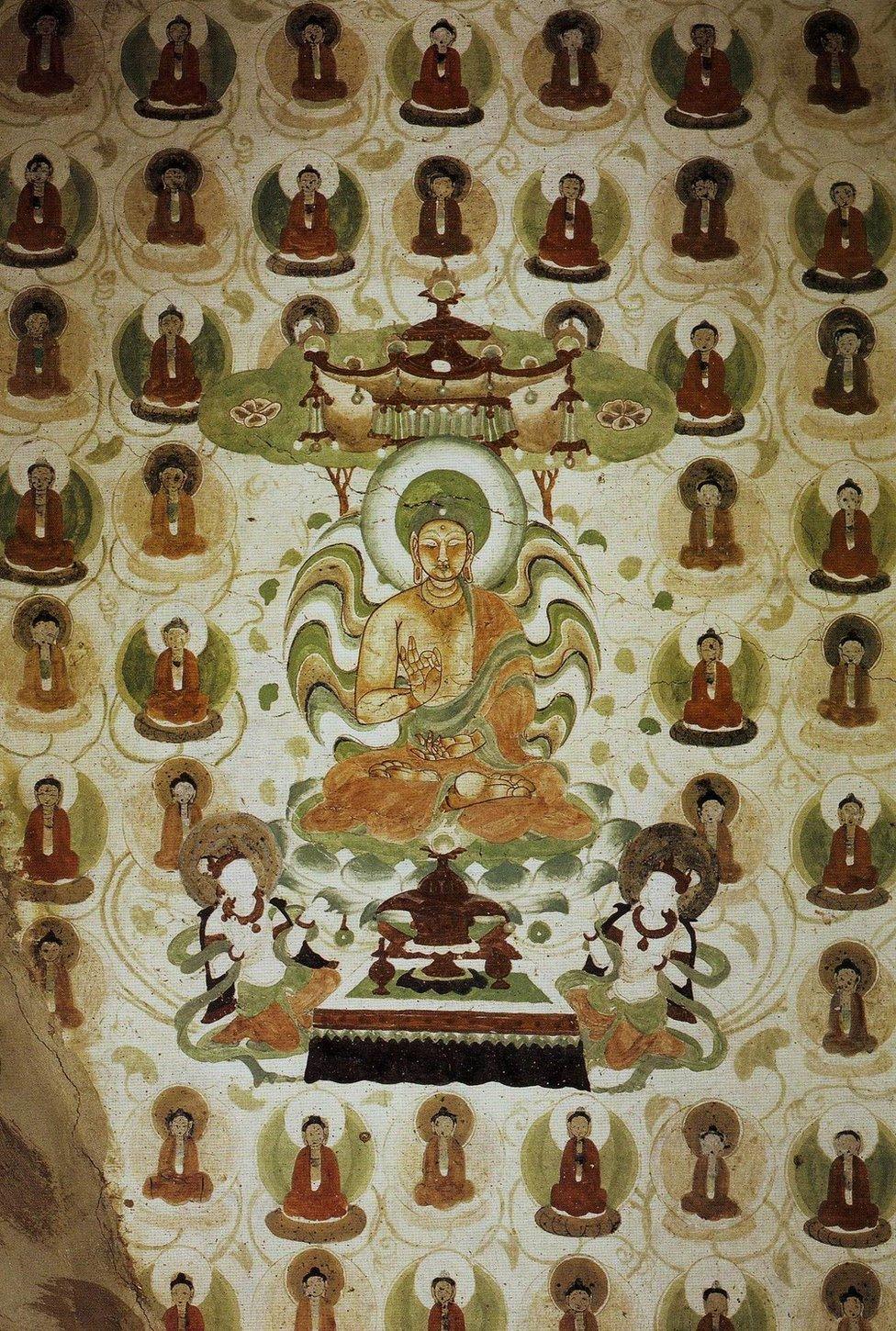
For the monks of Mogao, visual art was very helpful in propagating religious doctrine but there are also historical scenes. To make the murals, three layers of plaster were applied to a smooth wall surface on which to paint.
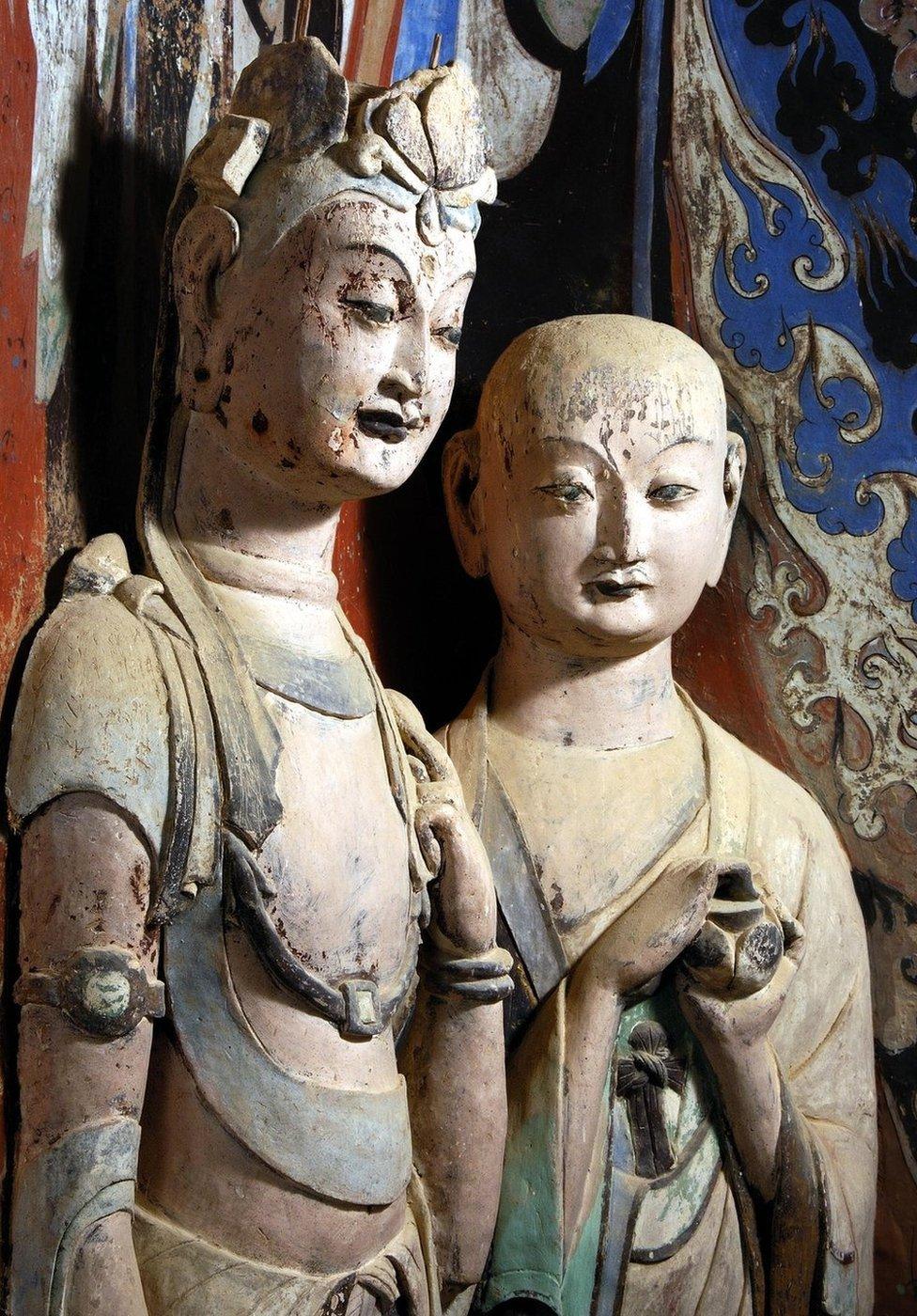
There are 2,415 statues remaining in Dunhuang, although many are Qing dynasty renovations. In earlier dynasties the backs of the main statues were attached to the wall, with their heads being made separately and then put on top of their bodies. In the Tang period we see fully detached statues for the first time.

It was during the Tang period, however, that two giant Buddha statues were constructed at the site, the largest one in 695 following an edict by Tang Empress Wu Zetian to build giant statues across the country. The two giant Buddhas are seen as reflecting the strength and self-confidence of the empire at this time.
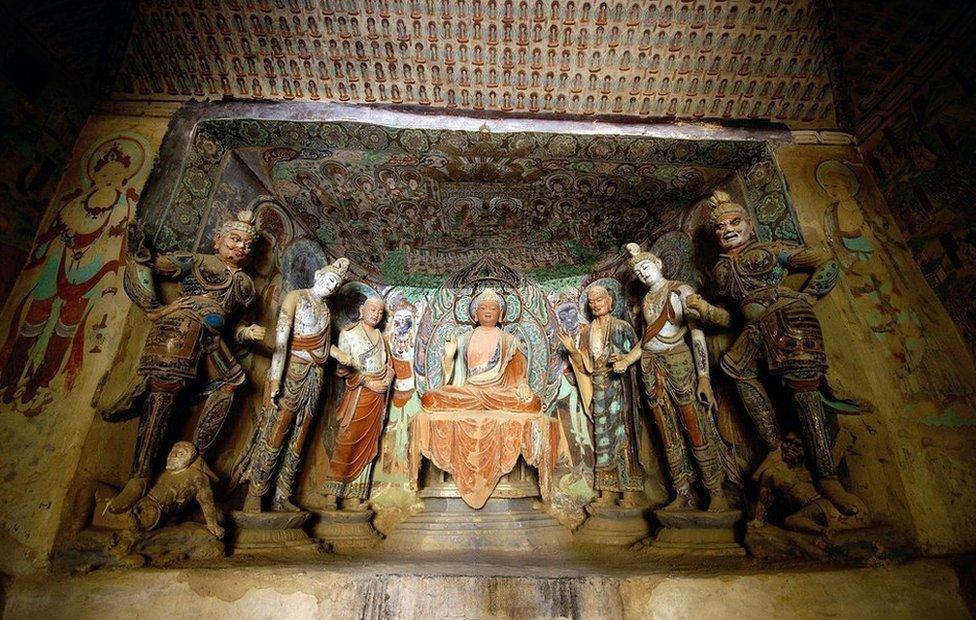
This High Tang Cave is considered a highlight of Mogao. In contrast to the statues of early dynasties that are attached to the walls, the fully detachable statues of the Tang era could be admired from all sides. The rich colourful clothes of the statues show the good life of monks in the Tang and the attention to detail is also impressive.
All photographs from Dunhuang: A City on the Silk Road, a Meet Asia guide from Make-Do Publishing, external. Pictures by Li Zhengde and the Dunhuang Academy.